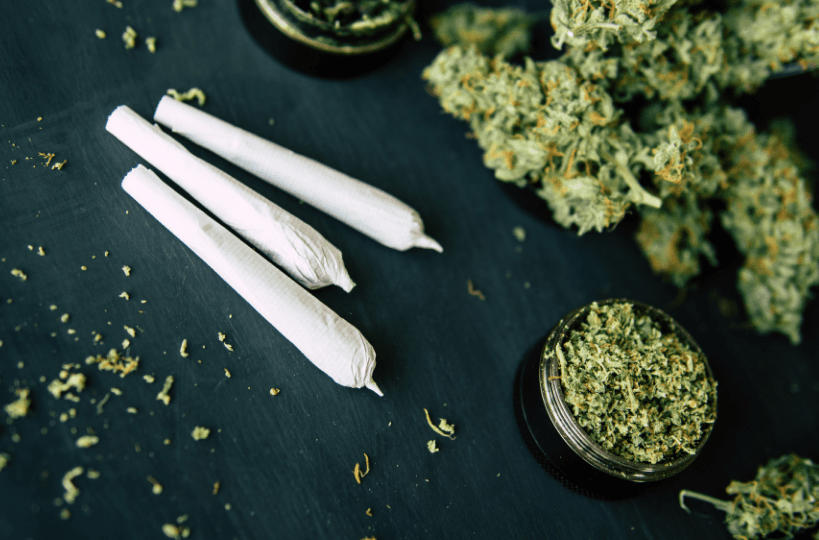History of Marijuana
Marijuana, also commonly referred to as weed, pot, cannabis, has a long history of use. Many cultures from thousands of years ago grew marijuana plants to use as a medicinal herb. Only later was the substance used for its euphoric and recreational purposes.
Marijuana use and abuse in the United States dates back to the early colonists who grew hemp plants for textile purposes. Marijuana became politicized due to racial discrimination and stereotypes about who was using and abusing the substance for recreational purposes in the 20th century. This led to criminalization and fueled the prison industrial complex that has played a role in the United States having the highest rate of incarceration of any country.
In modern times, marijuana has a resurgence in interest for medicinal use and strong advocacy for decriminalization. This is in part thanks to CBD which is a component of the plant that does not contain the psychoactive properties associated with THC. The proliferation of CBD shops helped pave the way for mainstream society to reconsider its stance on marijuana laws and uses.

The History of Recreational Use of Marijuana in the U.S.
According to some historians, recreational marijuana was popularized in the United States during the early 1900s when Mexican immigrants came to America due to social unrest during the Mexican Revolution. Not long after, the U.S. faced The Great Depression. During the Prohibition Era, concerns about vices grew beyond just alcohol and marijuana became a scapegoat.
In 1937, a Marijuana Tax Act was imposed. This made recreational marijuana use illegal in the United States. During The War on Drugs era of the 1970s, a great deal of misinformation about propaganda was created to discourage experimentation with drugs. Marijuana earned the label of a “gateway drug” and the label stuck.
In modern times, a number of states and Washington, D.C. have legalized marijuana for recreational use. Colorado and Washington were the first states to do so in 2012. Cannabis remains illegal under U.S. federal law. States’ rights have allowed for the creation of individual state-by-state regulations concerning the medicinal and recreational use of marijuana. Marijuana continues to be a controversial substance around the world.
Medical Marijuana
Properties in marijuana have a wide range of uses. It’s useful to keep in mind that, unlike pharmaceuticals, marijuana is derived from a natural plant. By definition, there is an added safety mechanism built-in as the plant has evolved to have certain properties that are beneficial for medicinal uses. Scientists and others with an interest in developing useful strains of marijuana for medical purposes have bioengineered variations on conventional marijuana plants to contain more or less of certain chemicals such as CBD and THC.
The Complexities of Marijuana
Different strains of marijuana have different properties.
The two main types of cannabis, Sativa and Indica, are used for a number of medicinal and recreational purposes. Sativa strains are best known for having a psychological effect which can include:
- Increased energy
- Reduction of anxiety
- Reduction of stress
- Increase in creativity
- Increase in focus
Indica strains are known for their “body high” effects. Creating a sense of relaxation and helping with insomnia and related sleep disorders.
Hybrids have been created in an attempt to create variations that have the best possible positive effects while minimizing the negative side effects. Hybrid strain variations are often referred to as “chemovars”. The shift in terminology is partly because “strain” has a negative association that correlates with viruses and diseases. Different chemovars include different amounts of CBD and THC as well as other active chemical components.
In other words, the category, or type, of cannabis may not be the greatest indicator of the effects you’ll experience.
Cannabinoids
Marijuana plants (aka. cannabis plants) contain dozens of chemical compounds called cannabinoids. Research on the myriad chemical compounds remains incomplete. The primary chemicals that receive the most focus remain tetrahydrocannabinol (THC) and cannabidiol (CBD). .
THC is the primary psychoactive chemical in marijuana. THC can result in a euphoric state of being “high”. THC interacts with areas of the brain that can lessen nausea and promote hunger. This can be beneficial for those who struggle with Eating Disorders (ED), malnutrition, and weight-related health concerns. THC, in pill form, is currently used to treat nausea symptoms experienced by those who are cancer survivors and loss of appetite experienced by those living with AIDS.
CBD, unlike THC, does not cause euphoria or impair cognition. Instead, CBD produces physical benefits that include:
- Pain reduction
- Stopping symptoms of nausea
- Preventing seizures
- Easing migraines
Cannabinol (CBN) is believed to assist with neurological conditions including epilepsy, seizures, and muscle stiffness that is difficult to get under control with traditional pharmaceuticals.
Tetrahydrocannabinol acid (THCA) is similar to THC but lacks psychoactive effects. Some believe it has the potential to provide benefits that include reducing inflammation caused by arthritis and autoimmune diseases. THCA may also help reduce symptoms of neurological conditions such as Parkinson’s disease and ALS.
Cannabigerol (CBG) is another chemical that is believed to assist in the reduction of symptoms associated with:
- Anxiety
- Depression
- Obsessive compulsive disorder (OCD)
- Post traumatic stress disorder (PTSD)

Side Effects Associated with Marijuana Use
The primary psychoactive chemical in marijuana, THC, can have negative side effects. These include but are not limited to:
- Dry mouth
- Dry eyes
- Dizziness
- Anxiety
- Paranoia
- Lethargy
- Increased heart rate
- Decreased blood pressure
Smoking marijuana can have negative effects and consequences related to lung irritation and lung function. Those with asthma, COPD, and other respiratory diseases are not recommended to smoke or vape marijuana.
It’s important to be aware that marijuana edibles can be slow-acting but produce strong effects. Ingesting cannabis can easily vary the amount of the substance a person’s body is used to encountering. As a result, it’s possible to experience exaggerated symptoms that produce long-lasting effects. This may come as an unexpected surprise and it’s important to be aware of the potential for intense psychoactive responses that can last for several hours and even days.
Do the Research and seek Sensible Medical Advice
Those interested in learning more about the benefits and pitfalls of marijuana use should reach out to a medical professional before experimenting on their own. The strength of modern-day cannabis can be dramatically more intense than in decades past. This is in part because strains have been bred specifically to have higher concentrations of THC and/or CBD. Some people do not tolerate cannabis well and have adverse reactions. Others may need to try a range of hybrid strains before finding one that suits their medical needs.
For more information, reach out to the professionals at Oasis Recovery to speak with a professional about sensible approaches to marijuana use.








